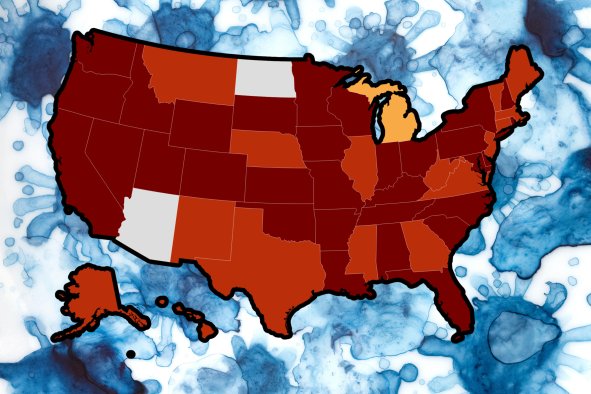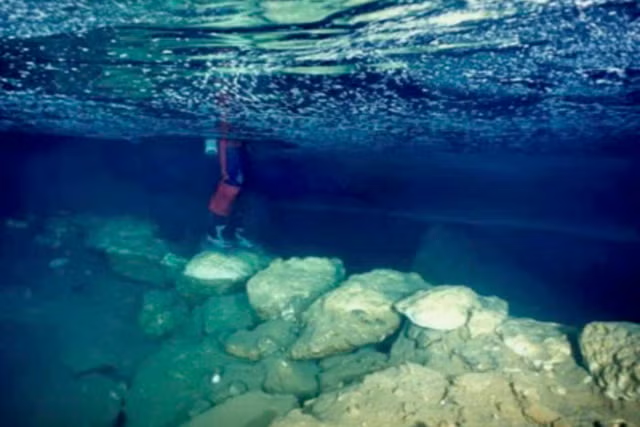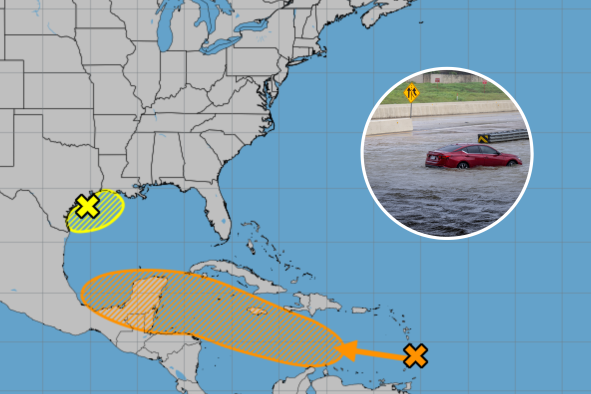If you're planning on taking a swimming trip to the Great Lakes this Labor Day, beware of dangerous conditions in the water.
The National Weather Service (NWS) has issued a high swim and rip current risk along the southern shores of Lakes Michigan and Huron. This warning, issued on Monday, cautions that the dangerous conditions could persist throughout the day.
Meanwhile, "moderate" risks are present along the shores of Lakes Erie and Ontario.
"Planning to head to the lake? Potentially deadly swimming conditions will continue at Lake Michigan beaches through much of Labor Day. And yes, it can happen to you," NWS Chicago said in a tweet on Sunday.
NWS Chicago then issued an updated tweet earlier on Monday, explaining that the deadly conditions will likely continue into the evening on Lake Michigan. "It's all fun and games until someone is swept away," the tweet said.
Zachary Yack, a meteorologist at NWS Chicago, reiterated the warning, telling Newsweek: "Persistent and breezy east-northeast winds continue to maintain waves of three to five feet at area beaches.
"Waves of this magnitude will continue to create life-threatening rip currents and dangerous swimming conditions. We recommend anyone heading to the southern Lake Michigan beaches today to remain out of the water, avoid piers and breakwalls, and obey any posted signs or closures."
In addition to cautioning would-be swimmers, the NWS has also issued a small craft advisory for Lake Michigan, in effect from Calumet Harbor to Michigan City until 10 a.m.. (CDT).
"Inexperienced mariners, especially those operating smaller vessels, should avoid navigating in hazardous conditions," the NWS said.
Lake Huron faces similar conditions, with a small craft advisory in place until 10 a.m.. (ET) this morning. Despite an expected improvement in conditions for vessels, swim warnings will remain as the risk of dangerous rip currents continues.
While the Great Lakes are not tidal like oceans, they still experience powerful currents. These currents form from any "combination of wind, waves, bottom formation, beach slope, water temperature, man-made structures, and natural outlets," according to the research organization Sea Grant Michigan.
Particularly dangerous currents can develop when onshore winds coincide with wave heights of three to six feet and a passing cold front.
Though water conditions may appear moderate, currents can reach speeds exceeding five miles per hour—faster than the speed Michael Phelps swam the 200-meter freestyle in 2008, according to the Olympics website.
The safest route to escape a current depends on the type you find yourself in, but in most cases this is perpendicular to the direction of the current, rather than against it.
Since 2002, hundreds of current-related incidents have been recorded along the shores of the Great Lakes, according to the NWS. The highest incident rate has occurred in Ottawa County on the eastern side of Lake Michigan, where 138 incidents, including 15 deaths, have occurred.
Other hotspots include Van Buren, Berrien, La Porte and Porter Counties, all of which have been identified as risk areas on Monday.
Do you have a tip on a science story that Newsweek should be covering? Do you have a question about the Great Lakes? Let us know via science@newsweek.com.
Disclaimer: The copyright of this article belongs to the original author. Reposting this article is solely for the purpose of information dissemination and does not constitute any investment advice. If there is any infringement, please contact us immediately. We will make corrections or deletions as necessary. Thank you.



